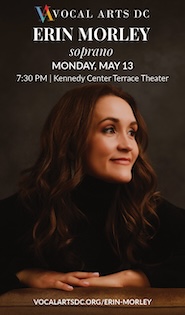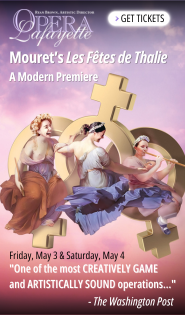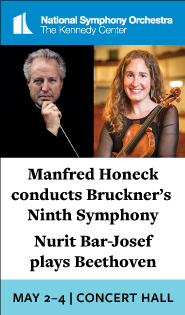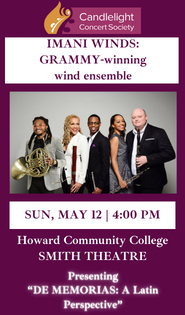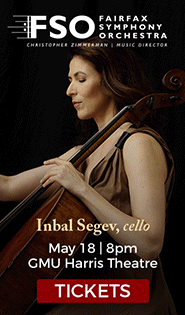Andsnes and Dover Quartet close Fortas season in dramatic fashion
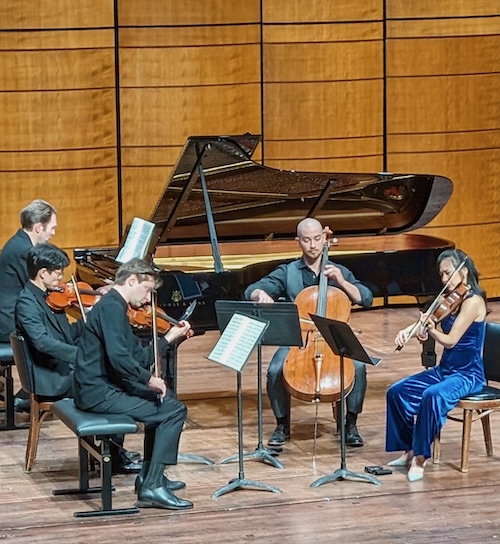
The Dover Quartet and pianist Leif Ove Andsnes performed Tuesday night at the Kennedy Center Terrace Theater. Photo: WCR
The Dover Quartet has had an unsettled couple of years, since violist Milena Pajaro-van de Stadt stepped down in 2022. Hezekiah Leung took her place for the 2022-2023 season, only to be himself replaced by Julianne Lee last fall.
The chance to hear the new formation came Tuesday night, when they appeared in a program with pianist Leif Ove Andsnes, presented by the Fortas Chamber Music Concerts series in the Kennedy Center Terrace Theater.
Or rather, it would have been, until first violinist Joel Link had to miss the concert because of illness. Kudos to Robin Scott, first violinist of the Ying Quartet since 2015, for stepping in to save the day. A not inconsiderable feat, considering that two of the three works on the program were not exactly core repertoire.
The quartet alone offered Duke Ellington’s song “In a Sentimental Mood,” as part of the Kennedy Center’s 125th birthday celebration honoring Washington’s favorite musical son. The Dovers have been playing this arrangement by Daniel Schlosberg since at least 2016, a transcription that sounds closest to Ellington’s instrumental version from the 1930s. Second violinist Bryan Lee got first crack at this memorable tune, bending the pitch in a sort of bluesy languor. The chance to hear the quartet’s newest addition on viola came next, and Lee rose to the challenge, here and throughout the evening, with a sweet tone, not overly powerful but assertive. Scott acquitted himself on the solo line just as admirably. The only drawback, not on stage, was a persistent cricket-like whine, either a ring tone or a hearing aid gone awry.
Andsnes took the stage for Ernő Dohnányi’s Piano Quintet No. 2, from 1914, which opened with a tense melody in E-flat minor from the first violin and Camden Shaw’s ardent cello, over a rumbling E-flat pedal in the piano. Andsnes proved a commanding presence in this concert, playing with greater range and sensitivity to accompany the strings in the first movement’s second theme, but in the loudest sections, his moody playing dominated the texture.
Lee again distinguished herself with a dulcet handling of the calmer second movement’s opening Allegretto section. The devilish Presto section provided a dramatic contrast, with Andsnes again standing out for his mercurial handling of the piano’s cadenza-like material, including glistening scales up and down. The sense of almost neurotic opposition served the score well, a duality implied by the contradictions of major and minor that pervade it.
The fugal opening of the Finale showed all four string players in a genial light, evenly balanced with one another, although in the more explosive, anguished parts of this movement, one regretted the absence of Joel Link’s more robust, athletic tone in the top register. Coinciding with another lovely solo outing from Shaw’s cello, the quartet transitioned stealthily again from E-flat minor into the parallel major.
After intermission came the even more orchestral scope of the Piano Quintet in F Minor by Johannes Brahms. First conceived as a string quintet and then transcribed for two pianos, the piece vacillates between chamber-style intimacy and vast fortes. Andsnes again drove the first movement rather hard, imposing a brisk tempo that one could argue exceeded the marking of Allegro non troppo.
In the opening section and in the central development, the string quartet took a more suave approach, melting together in a beautifully balanced ensemble sound. Andsnes, with a supreme range of touch, matched them in rarefied beauty, always returning to his commanding role in overpowering force. All five players coalesced most convincingly in the slow movement, taken at a slightly more Adagio pace, with glowing results, sentimental but understated in ideal Brahmsian way.
Andsnes again took charge in the Scherzo, crushing the technical demands with ferocity, matched in fervor by the string players. The trio section was a little slower, but still with a steady drumbeat of intense sound. Because of the programming juxtaposition, the possible influence of this quintet on Dohnányi became more apparent, particularly the enigmatic slow introduction of the Finale. In the faster music, which Brahms based on Hungarian folk music ideas, Andsnes again took command with a magisterial authority, driving the work to a thrilling conclusion.
Jennifer Koh’s first full season as artistic director of Fortas Chamber Music Concerts will begin with the Sphinx Virtuosi on October 19, 2024, and include an all-day immersive new music festival on November 16. kennedy-center.org
